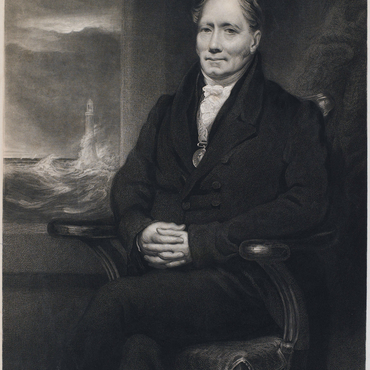
- Home
- King of Lighthouses
- Visitors to the lighthouse
- A Scotsman at Cordouan
Scotland is a pioneering nation when it comes to lighthouses. Its first lighthouse was built on the Isle of May at the Firth of Forth, one of the Scotland’s major rivers. The Northern Lighthouse Board was established in 1786. It oversaw the construction of 84 large lighthouses in the most isolated areas along the coasts and islands of Scotland. The projects were entrusted to a dynasty of engineers, whose founder, Robert Stevenson (1772–1850),was particularly known for his work on the Bell Rock tower (1811). Robert Stevenson’s children and grandchildren carried on the tradition, with the exception of the writer Robert Louis Stevenson (1850-1894). In 1824, with several large Scottish lighthouses to his name, Robert Stevenson undertook a journey aboard the Regent, the lighthouse and beacon service boat. The trip lasted more than two months. He went to meet Fresnel in Paris, and then sailed down the French coast to Royan. The harbourmaster had been a prisoner on a English pontoon during the Napoleonic wars, and served as an interpreter during Stevenson’s Cordouan visit, which took place on 12 September. Stevenson presented the lighthouse and its keepers an inscribed copy of his book about the construction of Bell Rock. Above all, Stevenson was interested in Fresnel’s lens, which had been installed at Cordouan the previous year. He returned to Edinburgh with two drawings of Cordouan, the only French lighthouse that was graced with an entry in the Encyclopædia Britannica next to Eddystone and Bell Rock. In the early 1820s, as an internationally-recognized architectural monument and a laboratory for important innovations in maritime signalling,Cordouan was a major lighthouse for engineers. It was well worth Stevenson’s long journey from Edinburgh.

